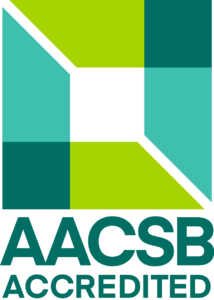Operating Systems
- Credits: 6
- Ending: Examination
- Range: 0P + 4C
- Semester: summer
- Year: 2
- Faculty of Economic Informatics
Teachers
Included in study programs
Teaching results
After completing the course, the student has the following:
Knowledge
A. To understand the procedures for installing an operating system.
B. To understand the purpose and function of basic operating system settings.
H. To be familiar with the theoretical foundations of the subject and to present results after studying the assigned theoretical material.
Skills
C. To perform file and directory operations — copying, creating, and deleting — using operating system commands.
D. To install operating system services, such as a web server or a database server.
E. To configure installed services according to given requirements.
F. To solve emerging issues using documentation and available information resources.
Competentness
A. To independently carry out the installation of an operating system in various environments.
B. To correctly configure essential operating system settings to ensure stable and secure operation.
G. To analyse operating system logs and service logs to identify and resolve issues affecting proper system and service functionality.
H. To present procedures and results clearly in the context of the studied theoretical concepts.
Indicative content
1. Introduction to operating systems
2. Processes and classes
3. Memory management
4. File systems
5. Input output
6. Jams
7. Virtualization and cloud
8. Multiprocessor systems
9. Security
10. Operating system installation and configuration.
11. Installation and use of virtual environment.
12. Work with files and directories and management of relevant permissions.
13. Using commands in Linux shell.
Support literature
1. Borge, A. (2023). Fundamentals of Linux: Prepare for the Linux Essentials Exam. Packt Publishing.
2. Burns, B., Grant, B., Oppenheimer, D., Brewer, E., & Wilkes, J. (2022). Kubernetes: The illustrated guide to microservices, containers, and cloud-native applications. O’Reilly Media.
3. Docker, Inc. (2023). Docker documentation. https://docs.docker.com
4. Gerendás, G. (2024). Modern Linux administration: Automation, containers, and cloud-native workflows. Apress.
5. Negus, C. (2021). Linux Bible (10th ed.). Wiley.
6. Šechný, M. (2021). Operačné systémy (GNU/Linux). Učebný text pre stredné a vysoké školy,elektronická verzia, .
Syllabus
1. Introduction to operating systems Overview of the basic concepts, roles and architectures of operating systems. Explanation of OS components and their interactions. Introduction to common operating system types and their practical applications. 2. Installation and use of virtual environments Principles of virtualization and its advantages for learning and system administration. Installation and configuration of hypervisors. Creation, management and practical use of virtual machines for testing and experimentation. 3. Installation and configuration of an operating system Steps for preparing the environment and performing an OS installation. Configuration of essential system settings, packages and drivers. Optimization of the installed system for secure and stable operation. 4. Installation and configuration of operating system services Introduction to system services such as web servers or database servers. Management of services, processes and system modules. Configuring services according to functional requirements. 5. Working with folders and files Managing files and directories using both command-line tools and graphical interfaces. Advanced operations such as batch processing, redirection and archiving. Efficient organization of data within the system. 6. Permission management in the operating system User and group management, access control models and permission structures. Use of ACLs and permission commands to enforce security. Setting up a functional and secure access environment. 7. Virtualization and cloud Comparison of virtualization models with cloud-based models. Overview of IaaS, PaaS and SaaS services. Use of cloud platforms for deployment, testing and scalable operation. 8. Server systems – basic administration Introduction to server-side OS administration, including monitoring, updates and security policies. Configuration of server roles in enterprise environments. Troubleshooting and managing common operational incidents. 9. Security Fundamentals of operating system security, including firewalls, updates and user privileges. Identification of risks and recommended practices for maintaining system integrity. Use of log analysis to detect and resolve incidents. 10. Containerization – installation and configuration Principles of containerization and its advantages compared to virtualization. Installation of Docker or similar tools. Basic configuration of the container environment and image management. 11. Containerization – application usage Creating and managing custom containers, working with Dockerfiles and deploying applications in containers. Using docker-compose for multi-service environments. Monitoring and optimizing container performance. 12. Data backup and recovery Types of backups, backup strategies, and scheduling. Use of backup and recovery tools to protect and restore system data. Risks associated with data loss and preventive measures. 13. Advanced command-line usage in Linux – scripting Efficient use of the Linux terminal, piping, automation, and advanced command chaining. Introduction to shell scripting, control structures and file/process manipulation. Development of scripts for system administration tasks.
Requirements to complete the course
Exercises 40% of the course evaluation
Students on the subject install the operating system environment in a virtual environment, either on the platform of the chosen provider (eg Google Cloud Platform) or in a virtual environment directly in the PC (eg Oracle Virtualbox). Subsequently, the installed OS student trains to configure and run system services, which serve as another extension for users in the system. Such exemplary services may be, for example, the installation of a web server or database server or other operating system services. The work on the exercises is also mastered the basics of scripting languages, especially in the Linux operating system (bash language) and also the basic configuration in Windows. Verification of practical skills takes place directly at the exercises, where several students are randomly selected who demonstrate the acquired knowledge (points A to G) or together with the teacher solve the current problems that arise in the implementation of solutions. The theoretical part of the course is provided in the form of presentations, where students present knowledge of the topic they have worked on (H).
Exam 60% of the course evaluation
Verification of the acquired knowledge is performed during the semester in the form of a test and at the end of the semester in the form of a test and an oral exam (the theoretical knowledge base A to G is verified).
Student workload
Student workload (in hours):
156 h (participation in seminars 26 h, preparation for seminars 23 h, elaboration of a semester project 25 h, preparation for a credit test 30 h, preparation for the exam 52 h)
Language whose command is required to complete the course
slovak
Date of approval: 04.03.2025
Date of the latest change: 06.11.2025

